Five pioneering dealers who stoked the market for collectible design
From Then to Now
-
Barry Friedman Ltd. on East 82nd street, ca. 1987
Image courtesy of Barry Friedman, Ltd
-
Mackintosh to Mollino: Fifty Years of Chair Design at Barry Friedman Ltd. on East 82nd street, 1983
Image courtesy of Barry Friedman, Ltd
-
Yoichi Ohira: A Phenomenon in Glass at Barry Friedman Ltd. on East 67th street, 2002
Image courtesy of Barry Friedman, Ltd
-
Wendell Castle: Volumes and Voids at Barry Friedman Ltd. on West 26th street, 2012
Image courtesy of Barry Friedman, Ltd
-
Paved with Good Intentions: An Installation by Ron Arad at Collins Building, Miami, 2005
Image courtesy of Friedman Benda and the artist
-
nendo: ghost stories at Friedman Benda, New York, 2009
Image courtesy of Friedman Benda and the artist. Photo © Jimmy Cohrssen
-
Commode Primitive by Ingrid Donat, 2007
Image courtesy of Friedman Benda and the artist
-
Lamp, 1960; cabinet, end of XIX century; furnishing, 1930; benches, XVIII century; rug, XX century. Installation view, Crossing at Nilufar Gallery, 1999
Image courtesy of Martina Gamboni for Nilufar
-
Easy Corner Sofa by Jean Royère, 1957; Appliques by Venini, 1932-35; and artwork by Paolo Scheggi at Nilufar Gallery
Photo © Mattia Balsamini for L'AB/Pamono
-
Witness flat collection Pixélisée by Jurgen Bey and armchair and pair of wall lamps by Melchiorre Bega at Spot, Stanza dei Giochi, Paris, 2013; a project created by Nina Yashar.
Photo © Ruy Teixeira
-
Sofa and armchair by Carl Malmsten and pair of ceiling lamps by Archimede Seguso at Spot, La Torretta, Paris, 2013; a project created by Nina Yashar.
Photo © Ruy Teixeira
-
Interior view of Galerie Anne-Sofie Duval, Paris
Image courtesy of Galerie Anne-Sofie Duval
-
Interior view of Galerie Anne-Sofie Duval, Paris
Image courtesy of Galerie Anne-Sofie Duval
-
Devant de Cheminée 'Serpent' by Jean Dunand, 1913, from the Yves Saint Laurent collection sale at Christie's, 2009.
Image courtesy of Christie's
-
Installation view of Tom Dixon exhibition at David Gill Gallery, 2005
Image courtesy of David Gill Galleries
-
Installation view of Tom Dixon exhibition at David Gill Gallery, 2005
Image courtesy of David Gill Galleries
-
Jungle Vip chandelier by Barnaby Barford from chandeliers exhibition at David Gill Galleries, 2014
Image courtesy of David Gill Galleries
-
Jacques Lacoste: Chauffeuse en métal laqué et tissu by Jean Royère, ca. 1950
Image courtesy of Galerie Jacques Lacoste
-
Jacques Lacoste: Paire d'appliques modele 'liane' by Jean Royère, ca 1964
Image courtesy of Galerie Jacques Lacoste
-
Jacques Lacoste: Meuble d'enfilade 'ondulations' by Jean Royère, ca 1950
Image courtesy of Galerie Jacques Lacoste
-
Jacques Lacoste: Console modele 'Tour Eiffel' by Jean Royère, ca 1952
Image courtesy of Galerie Jacques Lacoste
-
Artwork by Paolo Scheggi and bookcase by Ignazio Gardella, Italy, ca. 1955 at Nilufar Gallery
Photo © Mattia Balsamini for L'AB/Pamono
-
Travel trunks from Tibet, end of XIX Century, and rug Gillerutan, after 1941. Installation view of Crossing at Nilufar Gallery, 1999
Image courtesy of Martina Gamboni for Nilufar
If you could hit life’s rewind button and skip back five decades, you’d find the design collecting landscape looking very different from today’s. The few dealers on the scene at the time catered to highly specialized tastes, firmly devoted to Art Nouveau, Art Deco, and more traditional decorative arts. And modernist—then contemporary—design was mainly the domain of mass manufacturers focused on outfitting the homes of the middle to upper middle classes. Design sales and promotion overlapped very little with art world business models, and the idea of design as a collectible was virtually non-existent. Fast-forward to today, though, and more than a hundred design galleries (not to mention myriad design fairs) are studded across the globe—all primed to satisfy the appetite of a hungry and growing body of design collectors.
So how did we get from there to here? We enlisted seasoned art and design journalist Brook Mason to examine this dramatic cultural shift. In turn, she connected with five pioneering dealers who have—each in their own way—been instrumental in cultivating the market for vintage modern and contemporary limited-edition design over the past fifty years.
Nina Yashar
Tehran-born, Milan-based gallerist Nina Yashar is a true design trailblazer. In 1979, she established Nilufar—which means “lotus” in Farsi—and initially specialized in Swedish and Iranian carpets alongside postmodern pieces by Gaetano Pesce. Steadily, she began to add midcentury material, ultimately jumpstarting the first such gallery in Italy.
Yashar’s agile approach—her ability and willingness to evolve with the changing tastes of the time, and even to set the pace—has made her one of the design world’s most enduring figures. In the late 80s and early 90s, a decade after opening her doors, while the carpets were still in the mix, a considerable amount of Yashar’s business consisted of 1950s-era pieces by Scandinavian masters like Hans Wegner and Alvar Aalto, along with French favorites Charlotte Perriand and Jacques Adnet. By the early 2000s, the highly original postwar Italian architect-designers, such as Gio Ponti and Carlo Mollino (all beloved for their flair for form and color) took center stage. And as the new millennium progressed, young and ingenious talents like Martino Gamper became staples of her eclectic gallery program. Today, Yashar’s stable of designers includes contemporary makers Lindsey Adelman, , Isabelle Stanislas, and Massimiliano Locatelli, among others. Yashar still carries work by Perriand and period Scandinavian designers, of course. Over the years she’s learned that tastes aren’t changing so much as they are expanding.
Yashar’s unfailing eye has made her an emphatically trusted tastemaker for a diverse set of clients. She is the go-to for a variety of major interior designers and architects, including Jacques Grange, Peter Marino, Steven Volpe, and India Mahdavi. And second generation collectors are more and more common, too. In addition to eminent figures such as Ronald Lauder—who has perhaps the most extensive design holdings in the US—Yashar has been instrumental in forming the collections of fashion designers Miuccia Prada and Marc Jacobs. And she has placed iconic design examples in the Musée de Design et D’Arts Appliqués in Lausanne and the in Paris.
Asked what the she thinks the next few years hold for design, Yashar says, “What’s new in the design market is the growing number of collectors internationally.” While Europeans and Americans dominated her client base at first, by the mid-2000s, she had begun selling in Asia and Latin America as well. Today, Yashar says she regularly serves collectors in Lebanon and the Emirates—and is ever watchful for what’s just around the corner.
Anne-Sophie Duval
Parisian dealer Anne-Sophie Duval was another true bellwether in the field. Propelled by an auspicious lineage—her mother, Yvette Barran, traded in Art Nouveau works and racked up a slew of sales to museums—Duval established her own Left Bank gallery in 1972, specializing in Art Deco rarities, which were experiencing a serious revival at the time.
“Back then, Art Deco was a key aesthetic, and collectors were seeking examples by Armand-Albert Rateau and Eileen Gray,” says Julie Blum, Duval’s daughter and now head of the family business. What was true then is even more so now. “The difference today is that the number of Art Deco collectors has risen more than 50%, alongside the growing sophistication of collectors and the ever increasing number visiting Paris galleries on a regular basis.”
As Blum points out, interests have been stoked in the new millennium by high-profile museum exhibitions like the 2004 Ruhlmann: Genius of Art Deco show at the Metropolitan Museum of Art, and glamorous auctions likes Christie’s Collection Yves St. Laurent et Pierre Bergé sale in 2009. Also piquing demand is the steady stream of celebrity interior designers, including the ever-influential Grange and Marino, as well as Juan Pablo Molyneux. Major and elaborate masterpieces are changing hands—even an entire Rateau bathroom with all the fittings. Blum has one on offer equivalent in quality to the one in the collection of the Musée des Arts Décoratifs. With keener demand, of course, prices have skyrocketed, and now a Rateau bronze armchair marked with shell motifs would be tagged at €2,000,000 or higher, notes Blum, who clinched a deal for one over five years ago.
In the past decade or so, Blum has branched out beyond the 1920s and ’30s, and now offers early modernist pieces, including top-tier ceramics from the 1950s. Anne-Sophie Duval’s successful 2010 exhibition, La Liberation de la Former, featured work by Guidette Carbonelle and Denyse Gatard, and handily reflected the growing demand for such works. “Interest was enormous, and practically all [the pieces] were plucked up at that show,” reports Blum. Pointing to the next chapter, she notes that smaller works are attracting growing clients in search of eclectic accents to express their individual personalities. “They’re looking for Art Deco design that is compatible with paintings by Robert and Sonia Delaunay, as well as contemporary artists,” says Blum. As she knows, it’s all about offering her clientele something truly unique—something no one else has.
David Gill
Twenty-five years ago, London-based dealer David Gill opened his eponymous gallery. “I started after leaving Christie’s in 1989, focused on 20th-century masters like Ruhlmann, Giacometti, and Gray, amongst others,” he explains; adding, “But soon after I decided to initiate exclusive, curated contemporary furniture exhibitions.” To enter the then emerging marketing for one-off and limited-edition design examples, Gill’s Fulham gallery championed work by Donald Judd and Garouste & Bonetti. “I wanted be in today’s world and showcase design that straddled sculpture and functionality. I wanted to pioneer design collecting,” recalls Gill.
Gill found an audience for his design vision almost immediately, attracting clients like Lord Jacob Rothschild and Doris Saatchi, along with those prominent interior designers—such as David Mlinaric—with massive international influence. Today, Gill counts among his clientele fashion designers like Giambattista Valli and entertainers like Madonna. He cultivates relationships with collectors as far away as Korea, Hong Kong, and Russia.
Gill now commands an impressive space directly opposite Christie’s and a showroom in Vauxhall, demonstrating his stature as a design dealer and the genre’s growing presence as more and more contemporary art collectors look for design in sync with their art holdings. Further proof of his prowess: Gill has been honored with the Chevalier of the Ordre des Arts & des Lettres and as Officier of the Ordre des Arts & des Lettres in recognition of his outstanding contributions to French culture.
Even with such successes, Gill remains optimistic that the market will continue to expand. “With design institutions like the London Design Museum and New York’s Museum of Modern Art continuously adding to their collections, interest in this once niche category is bound to soar,” says Gill.
Jacques Lacoste
Back in Paris, Left Bank dealer Jacques Lacoste has also been long ahead of the game. Opening in 1986, he featured pillars of Art Deco such as Ruhlmann alongside Modernists like Adnet. “I began to notice that a number of clients wanted an alternative to Art Deco because of condition issues. They were concerned about the fragility of lacquered work, and instead sought design that was more compatible with contemporary living,” explains Lacoste. So in the early ‘90s, he began introducing Jean Royère and Serge Mouille.
Then, in 1995, Lacoste acquired the archives of Royère. Interior designers and architects such as David Kleinberg, Alan Wanzenberg, the late Jed Johnson, and the late David Collins all made a beeline for Lacoste’s Royère offerings—and top tier clients continue to vie for these pieces today. One testament to the work’s popularity? The prices are inarguably staggering: A Royère Polar Bear Sofa once went for €25,000 Euros; today that same model is priced at €250,000.
“In terms of design, Royère’s aesthetic was radical,” points out Lacoste. “There are 25 different models of lighting and a major one goes for in excess of €200,000. We can’t keep the models with five and seven branches in stock. I still carry Dupré-Lafon and Ruhlmann, but Royère is what’s highly sought.”
His client base now expands far beyond Europe and the States to Latin America. Asked to share his perception of the current pulse of the collecting world, he reports that “a growing number of collectors want exceptional historical design pieces, many of which had been in earlier collections, and that, therefore, provenance is as critical as ever.” He assures us, though, that masterpieces remain out there, undiscovered. “I still find outstanding, unique pieces here in France today, even just down the street.”
Barry Friedman
After a stunning 48 years in the business, stalwart American dealer Barry Friedman recently retired, and is now spending his time working on both a book and his impressive archives. Back in the sixties, however, when Friedman first began, his attentions were focused on Tiffany and Gallé glass, as well as Wiener Werkstätte and Art Nouveau furniture. Over the years, Friedman expanded his purview to a broad variety of design expressions offered across multiple Manhattan-based galleries, including Barry Friedman Ltd., Friedman Vallois, and Friedman Benda.
In 1997, Friedman began to spotlight contemporary work, particularly Michael Glancy’s creations in glass, silver, and copper. The following year, he brought on the Japanese-born, Venice-based glass artist Yoichi Ohira. “When I first showed work by Glancy and Yoichi, predominantly glass collectors made up the clientele,” says Friedman. “But things really changed in the early 2000s.”
In 2003, Friedman teamed up with Swiss-born Marc Benda and began to sink his teeth into the possibilities of contemporary design. He soon took on Paris designer Ingrid Donat, and then Ettore Sottsass and Ron Arad not long after. As the art market heated up in these years, it became clear to Friedman that collectors interested in, say, Warhol and de Kooning also easily gravitated to limited-edition design pieces. This increasingly permeable membrane between art and design collecting, Friedman recalls, “doubled my business.”
Dollars aside, Friedman’s cultural capital is evidenced by his ongoing relationships with collecting museums. He holds claim to sales to more 40 institutions worldwide, including the Metropolitan Museum of Art, the Museum of Modern Art, the Houston Museum of Art and the Cooper Hewitt, Smithsonian Design Museum. As the cultural and artistic value of collectible design multiply, so does investment.
According to Benda, though, the biggest shift in the design world over the past quarter-plus century has been its democratization. It is no longer a specialty favored by the few; the bug has spread worldwide on both the consumer and dealer ends. “Private clients, museums, and even commercial ventures are [all] taking on design, and at larger and larger scales,” he says.
-
Text by
-
Brook S. Mason
Brook, Art Newspaper U.S. Correspondent, is a 20-year veteran journalist covering the art market, design, and the business of art fairs in New York, Paris, London, Basel, Dubai and Moscow.
-
Découvrez plus de produits
Console Cansado avec Tiroirs par Charlotte Perriand
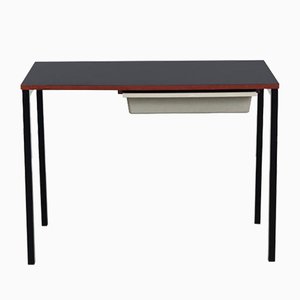
Lampes Murales CP-1 par Charlotte Perriand pour Galerie Steph Simon, 1950s, Set de 6
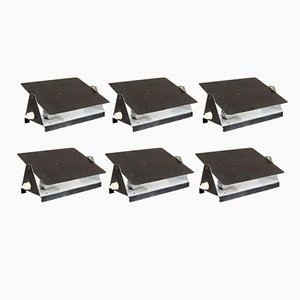
Enfilade Cansado par Charlotte Perriand pour Steph Simon, 1958
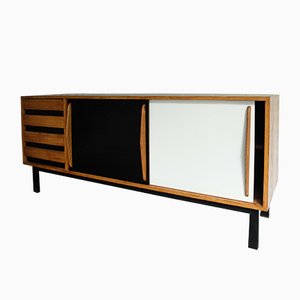
Chaises Les Arcs par Charlotte Parriand pour Cassina, 1960s, Set de 4
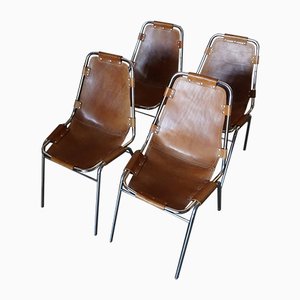
Lampe de Bureau Modèle 600 par Charlotte Perriand de Jumo, 1930s
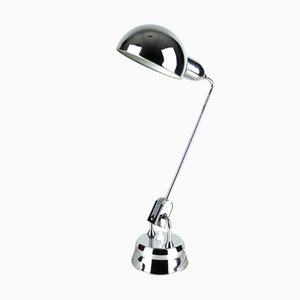
Meuble de Rangement LC Casiers par Le Corbusier & Charlotte Perriand pour Cassina, 1978
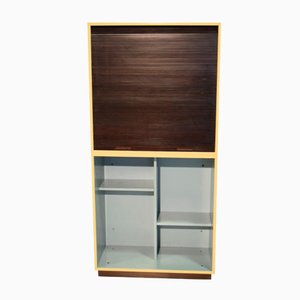
Tabourets Les Arcs en Cuir par Charlotte Perriand pour Cassina, 1960s, Set de 6

Tabourets Les Arcs en Cuir par Charlotte Perriand pour Cassina, 1960s, Set de 2
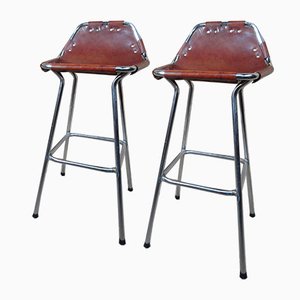
Chaise Longue LC4 par Le Corbusier, Pierre Jeanneret & Charlotte Perriand pour Wohnbedarf, 1950s
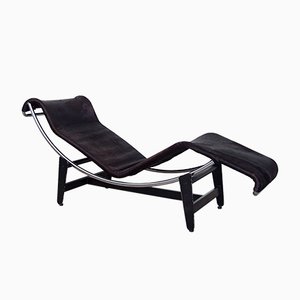
Table Les Arcs par Charotte Perriand, 1968

Fauteuil Vintage LC 2 par Le Corbusier, Jeanneret et Perriand pour Cassina

Lampes nfraphil par Charlotte Perriand pour Philips, Danemark, 1950s, Set de 2

Chaises de Salon par Charlotte Perriand pour Les Arcs Ski Resort, Set de 2

Tabouret Vintage par Charlotte Perriand
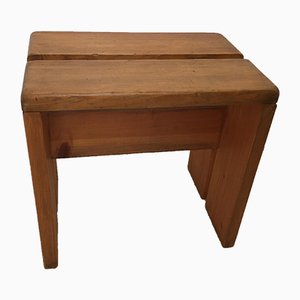
Chaise Les Arcs par Charlotte Perriand

Wooden Dining Chairs by Charlotte Perriand, Set of 3

Chaises en Cuir par Charlotte Perriand pour Les Arcs, 1960s, Set de 4

Tabourets de Bar Les Arcs par Charlotte Perriand, 1960s, Set de 4

Tabouret Les Arcs par Charlotte Perriand, 1960
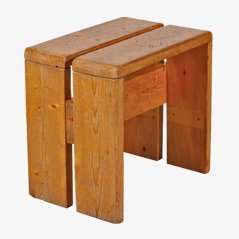
Tabouret Sandoz par Charlotte Perriand

Lampe de Bureau Moderniste par Charlotte Perriand pour Jumo, France, 1950

French CP1 Wall Sconces by Charlotte Perriand for Steph Simon Black, 1960s, Set of 2
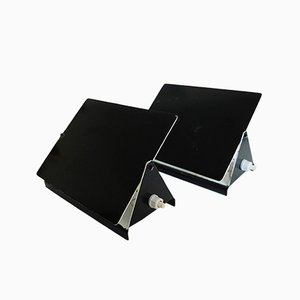
Bougeoir Minimaliste par Charlotte Perriand pour Les Arcs, 1960s
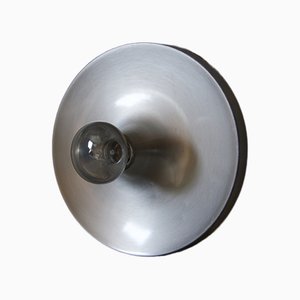
Applique Murales CP1 par Charlotte Perriand pour Steph Simon, Set de 2

Tabourets en Bois par Charlotte Perriand pour la Station de Ski Les Arcs, Set de 2
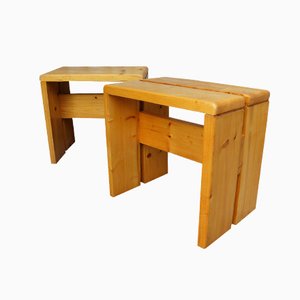
Lampe Sun Vintage par Charlotte Perriand pour Philips

Banc Cansado par Charlotte Perriand, 1950s

























 Portrait of Nina Yashar
Photo © Mattia Balsamini for L'AB/Pamono
Portrait of Nina Yashar
Photo © Mattia Balsamini for L'AB/Pamono
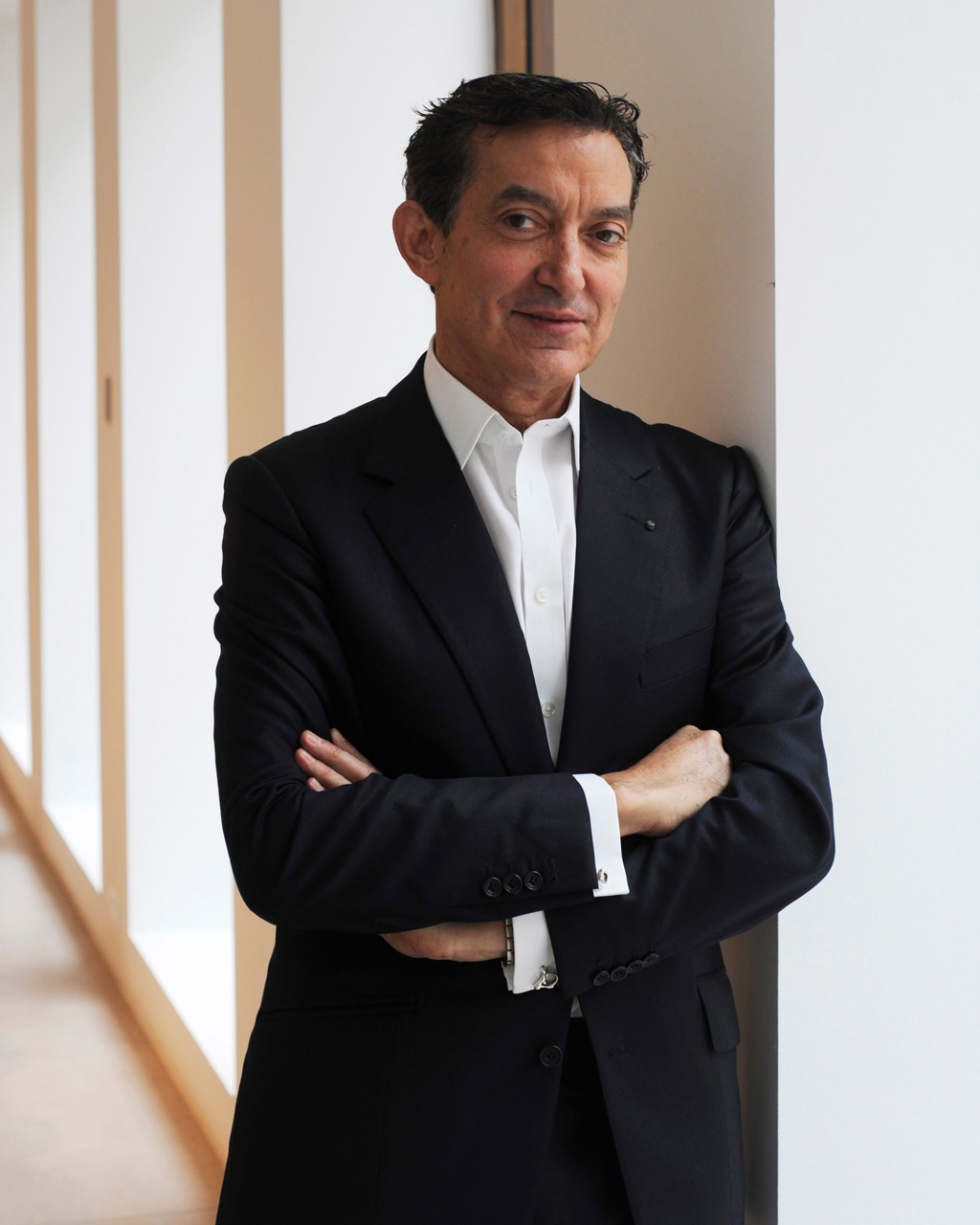 Portrait of David Gill
Courtesy of David Gill Galleries
Portrait of David Gill
Courtesy of David Gill Galleries
 Portrait of Barry Friedman in gallery
Courtesy of Barry Friedman, Ltd.
Portrait of Barry Friedman in gallery
Courtesy of Barry Friedman, Ltd.
